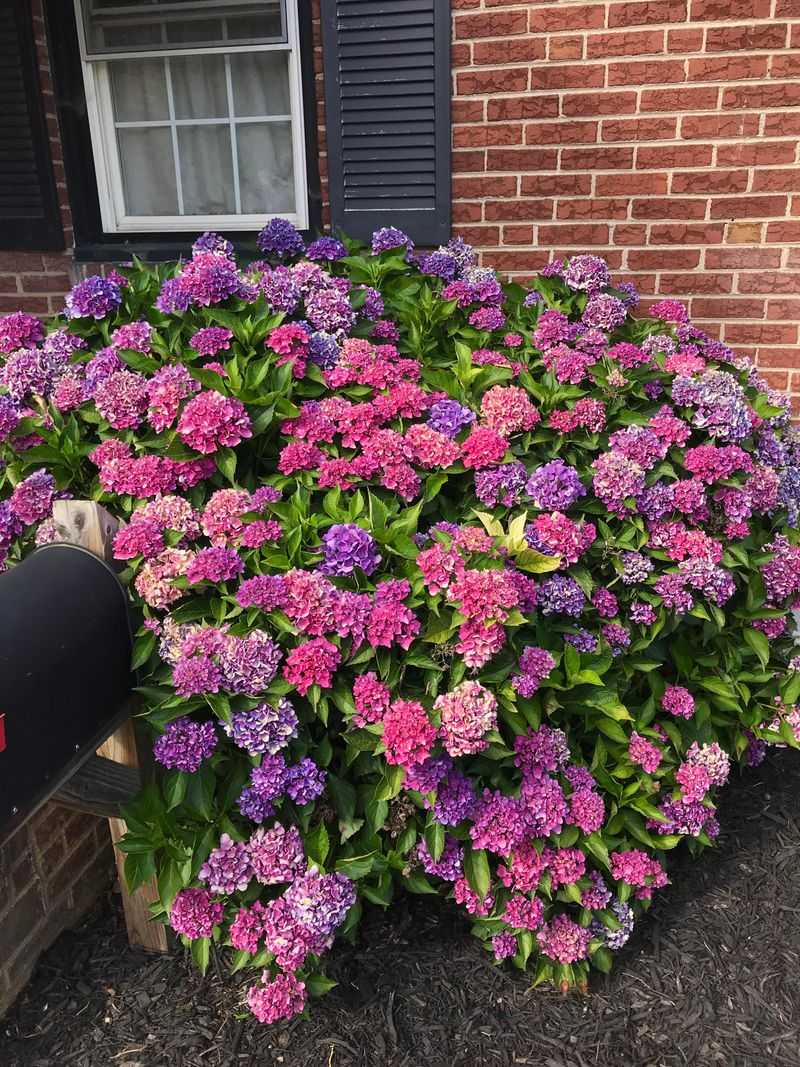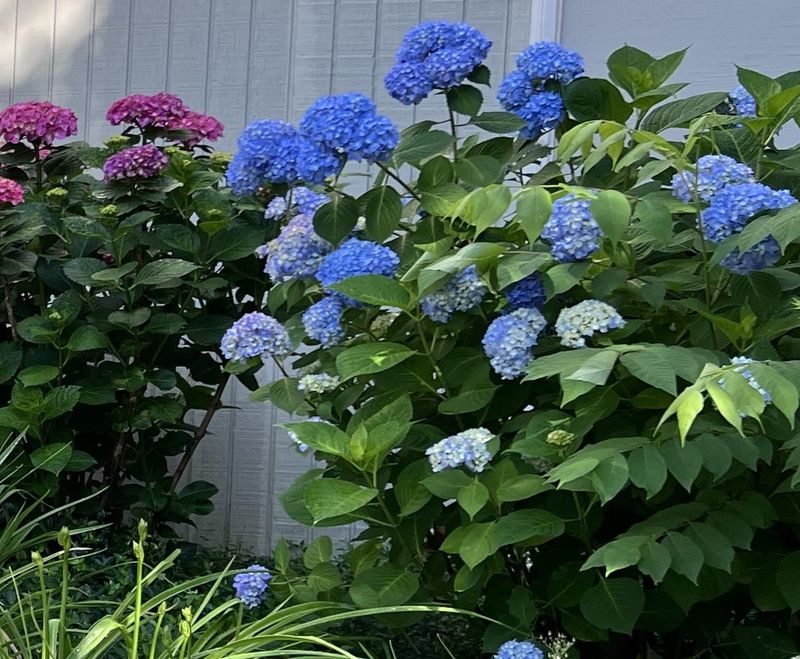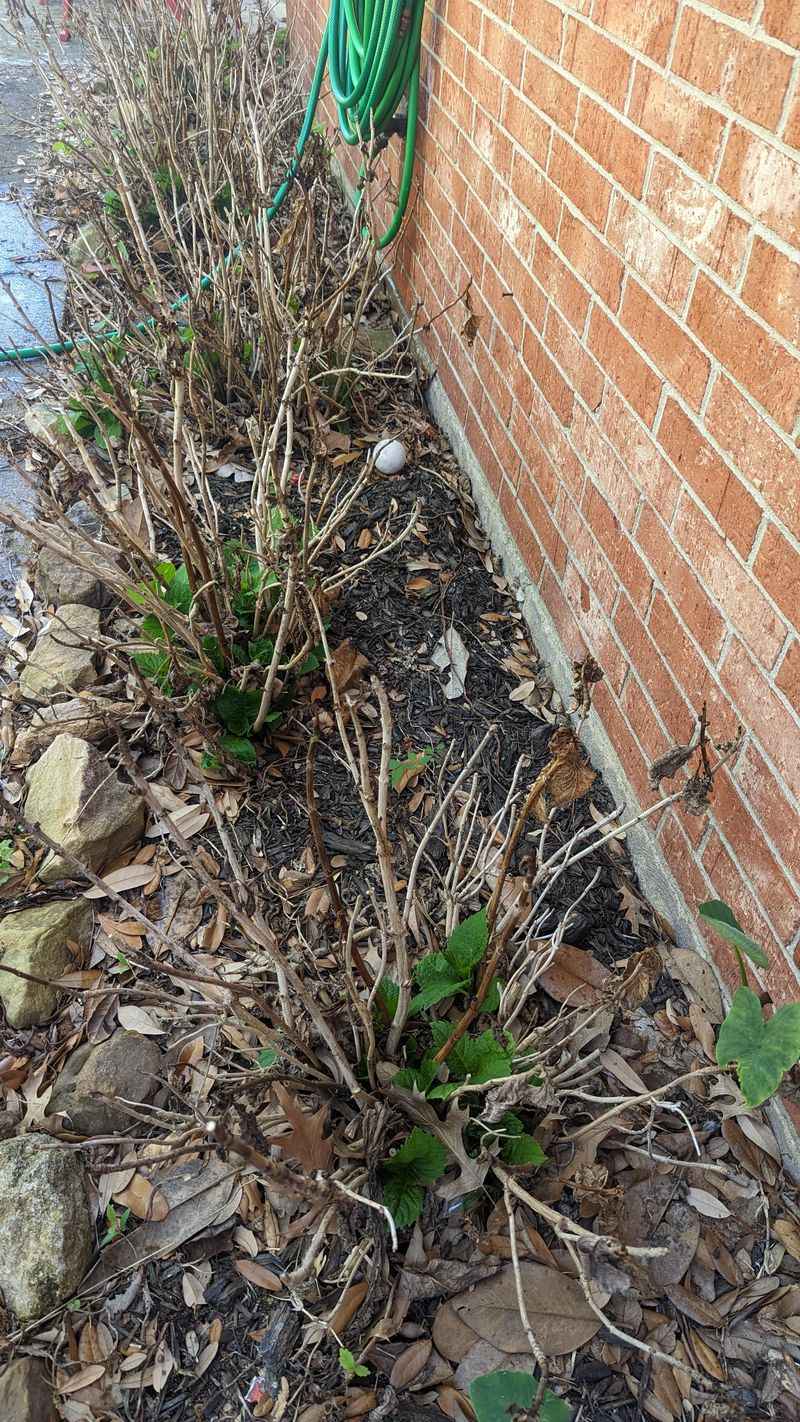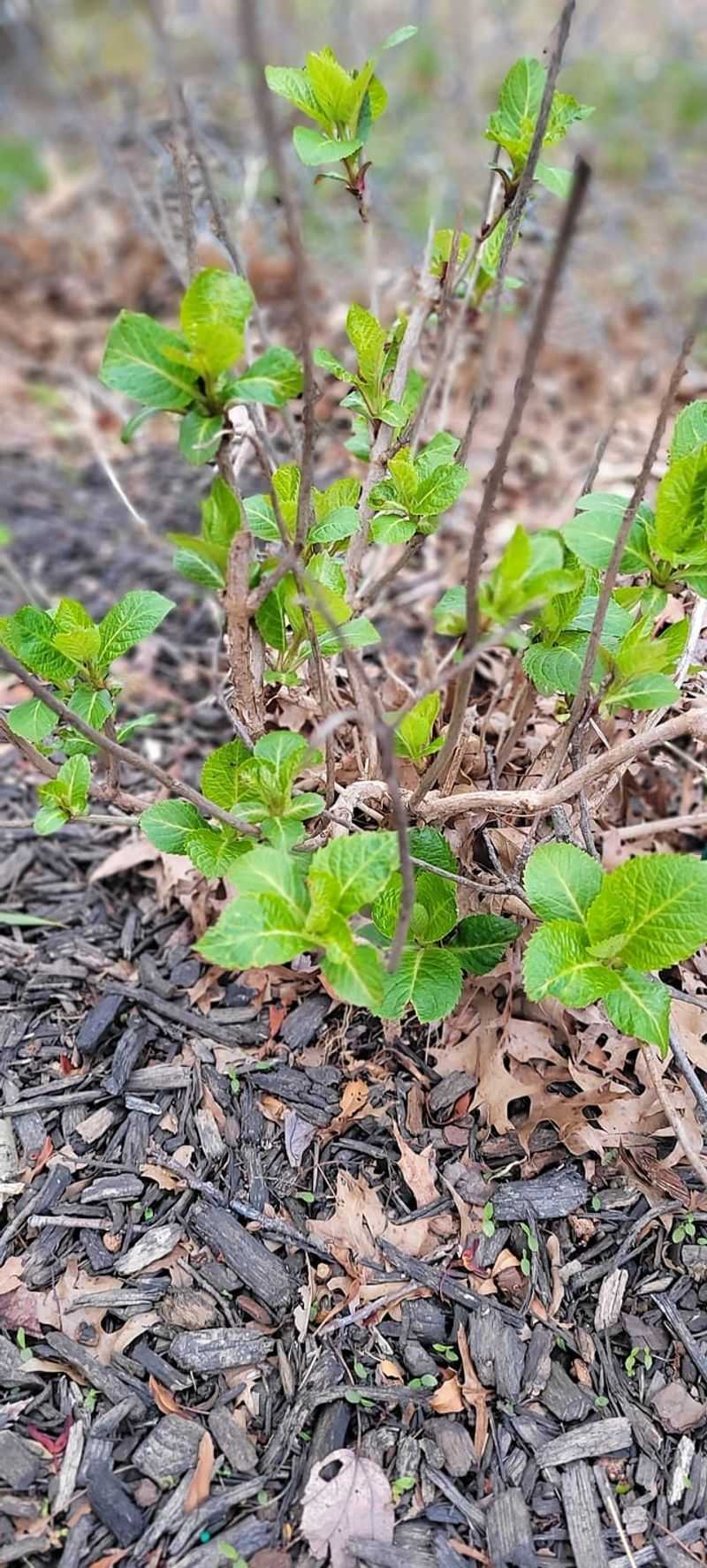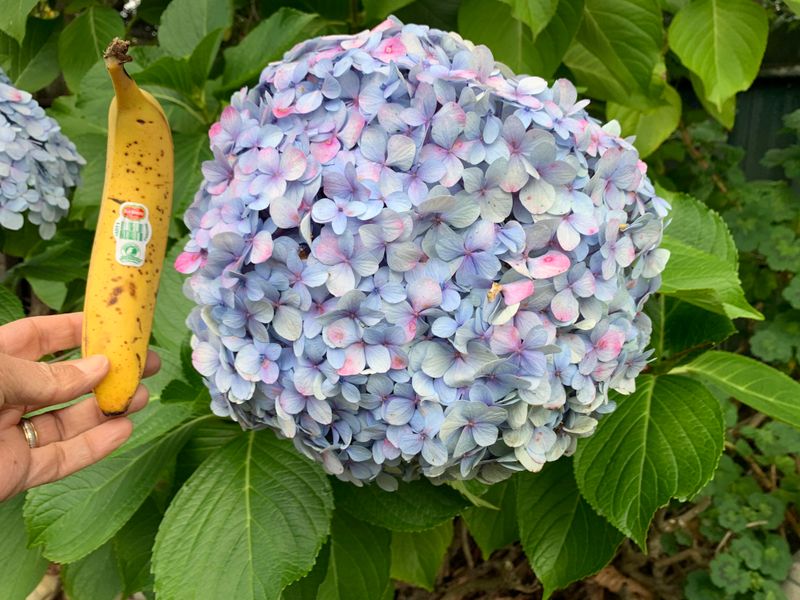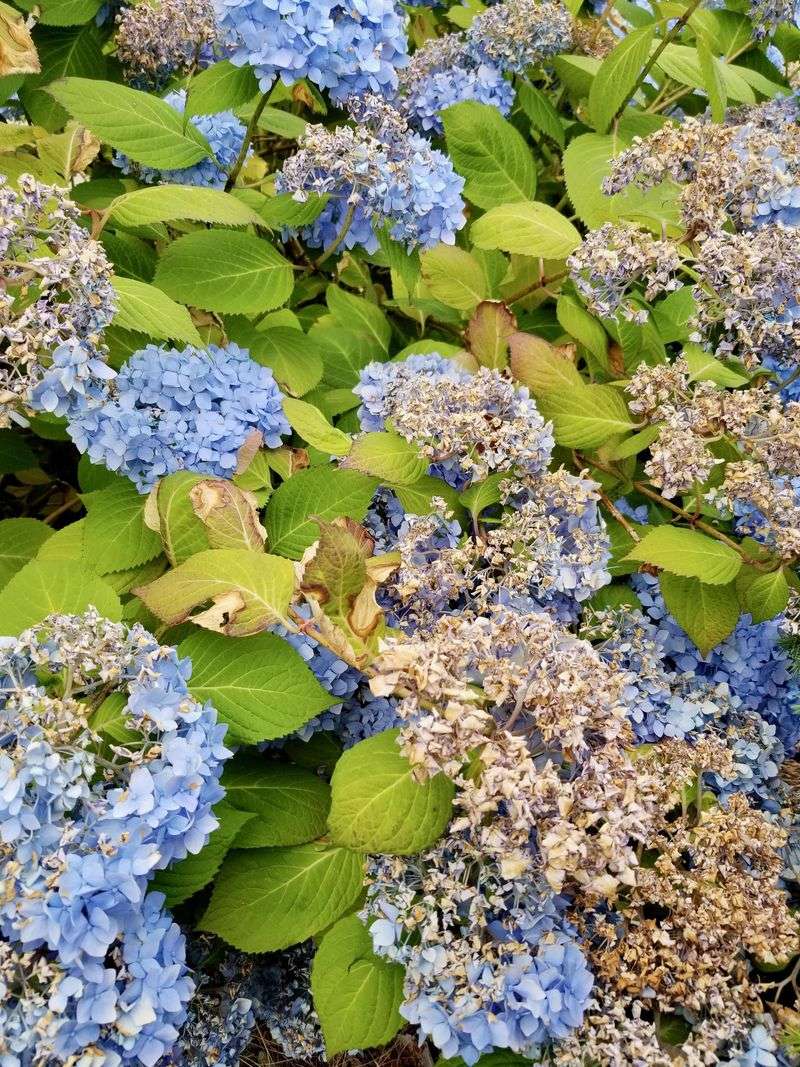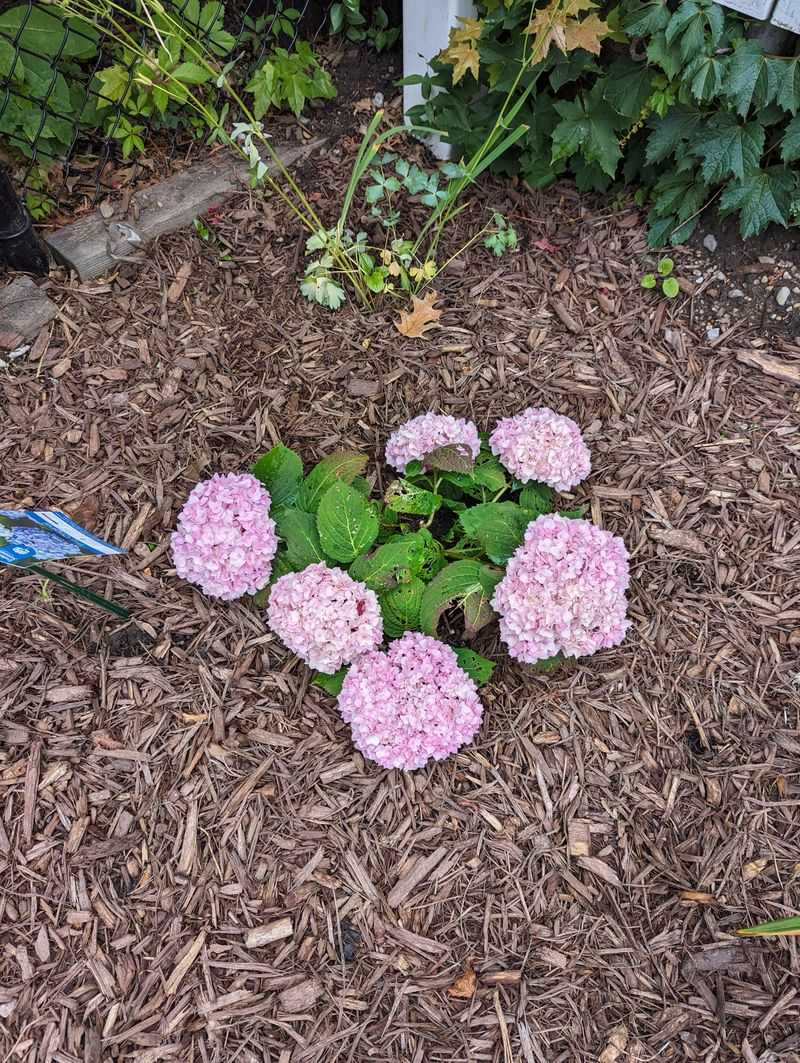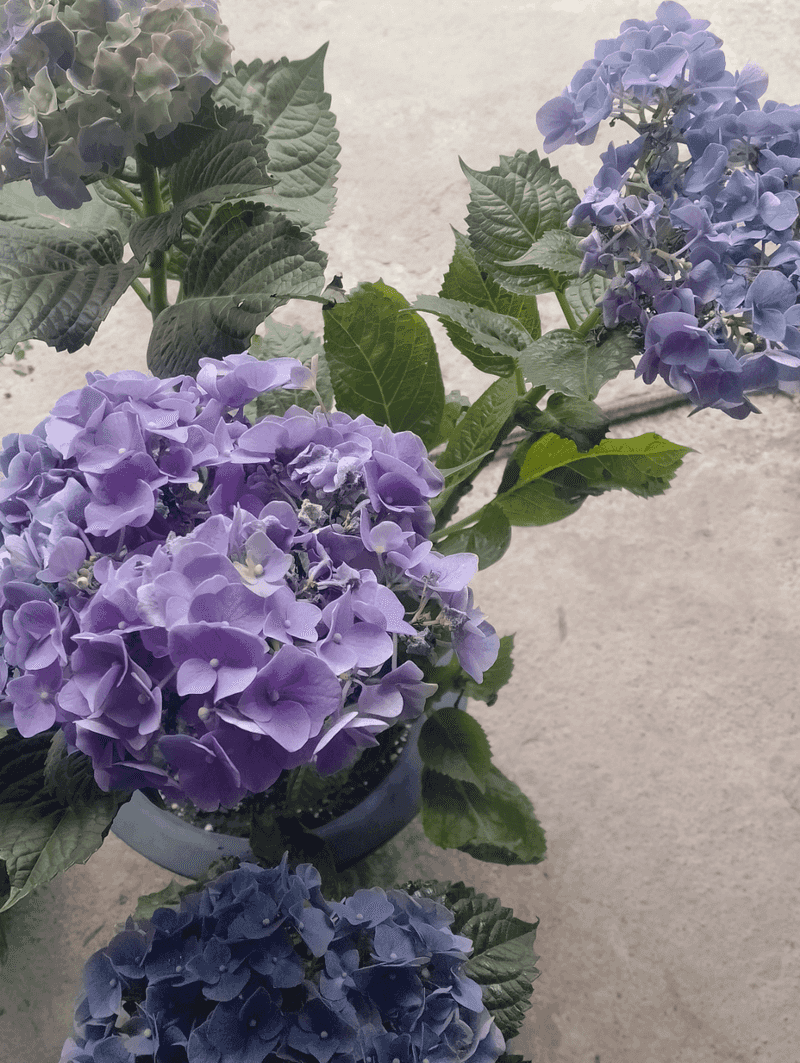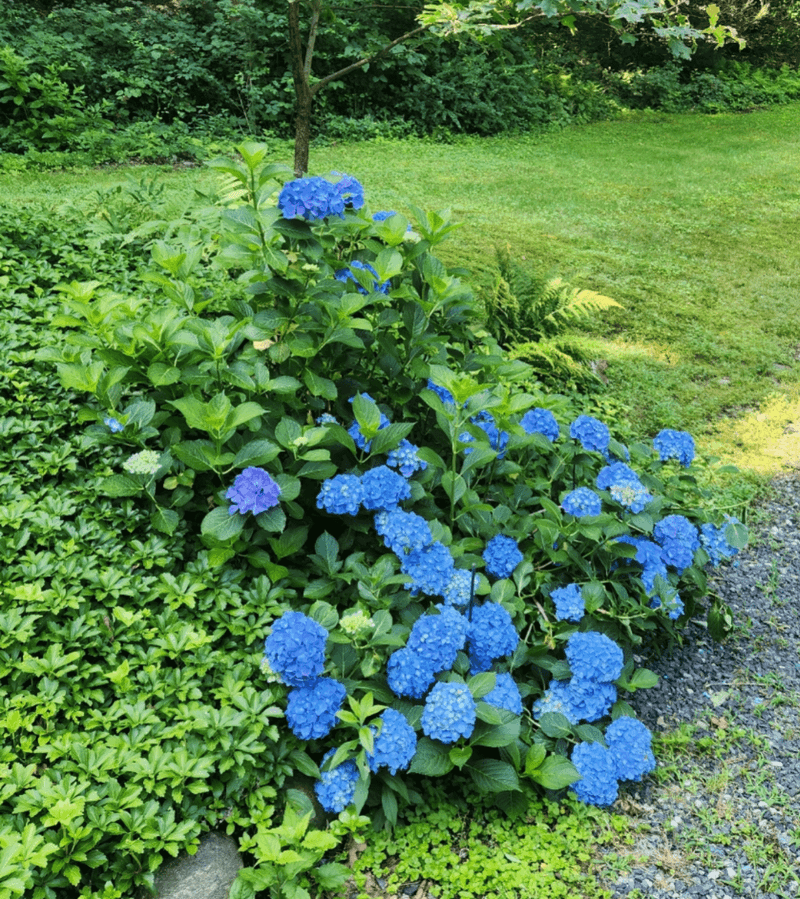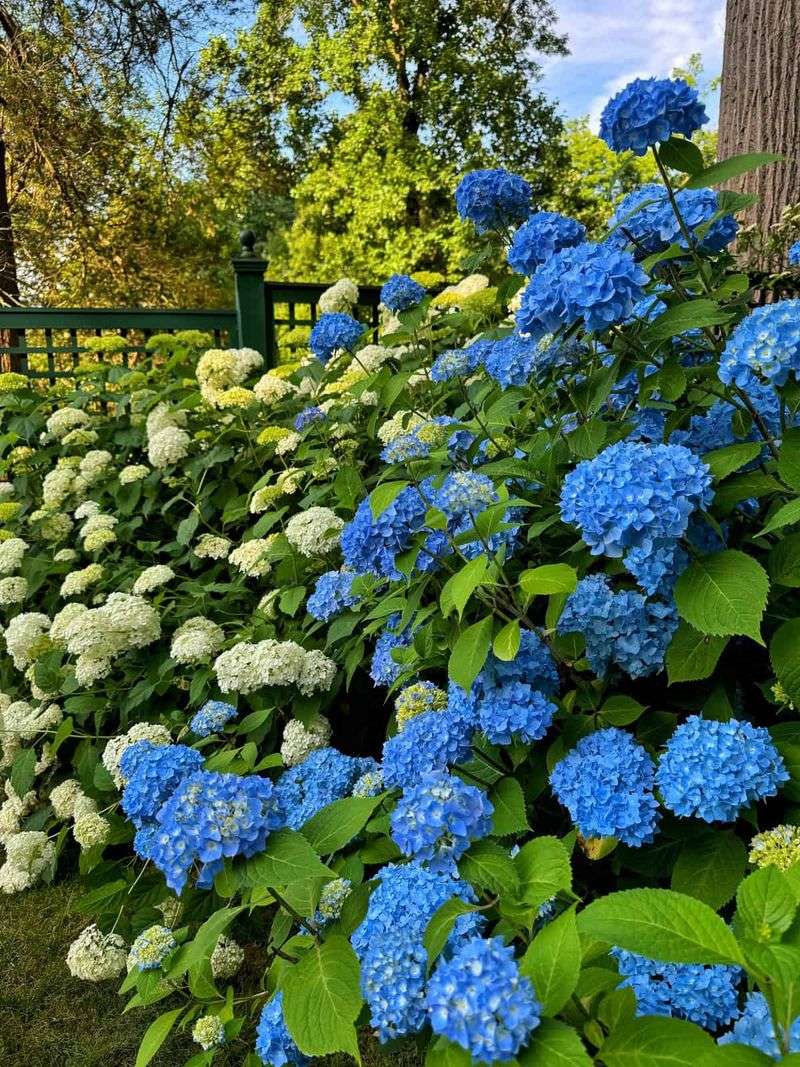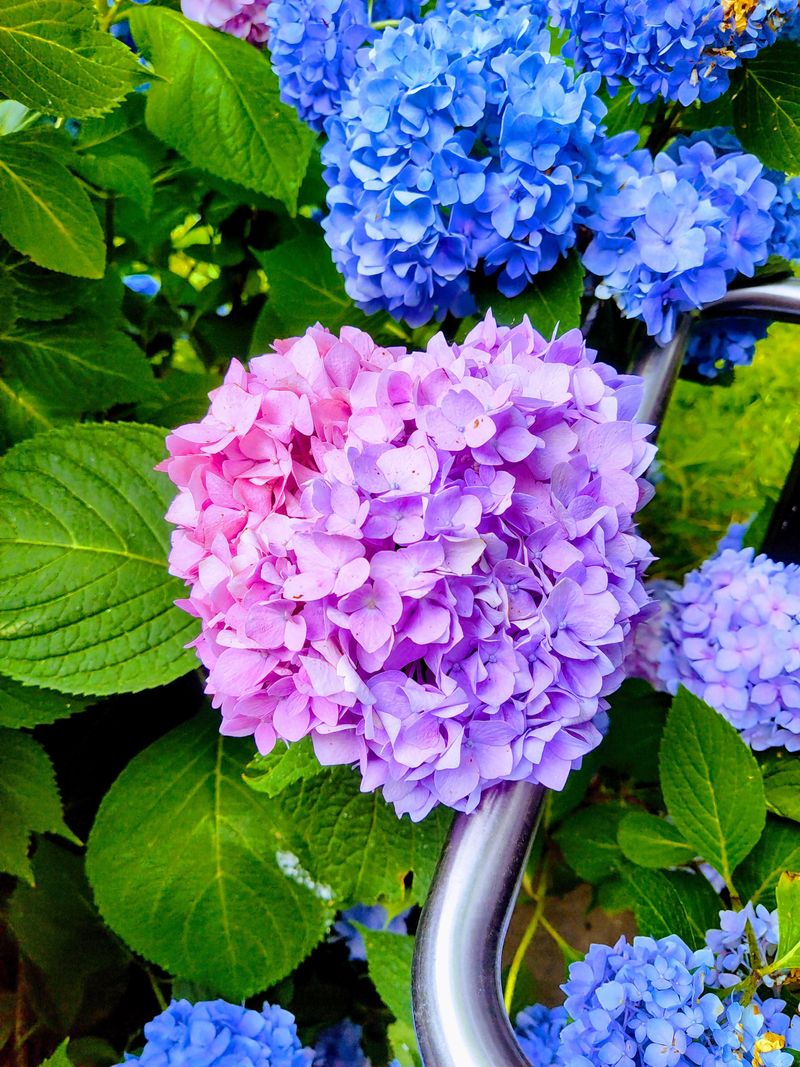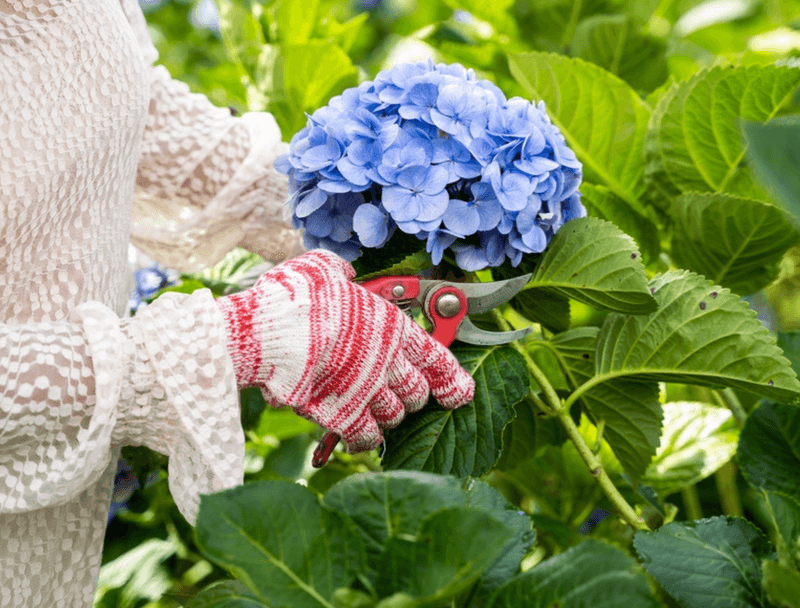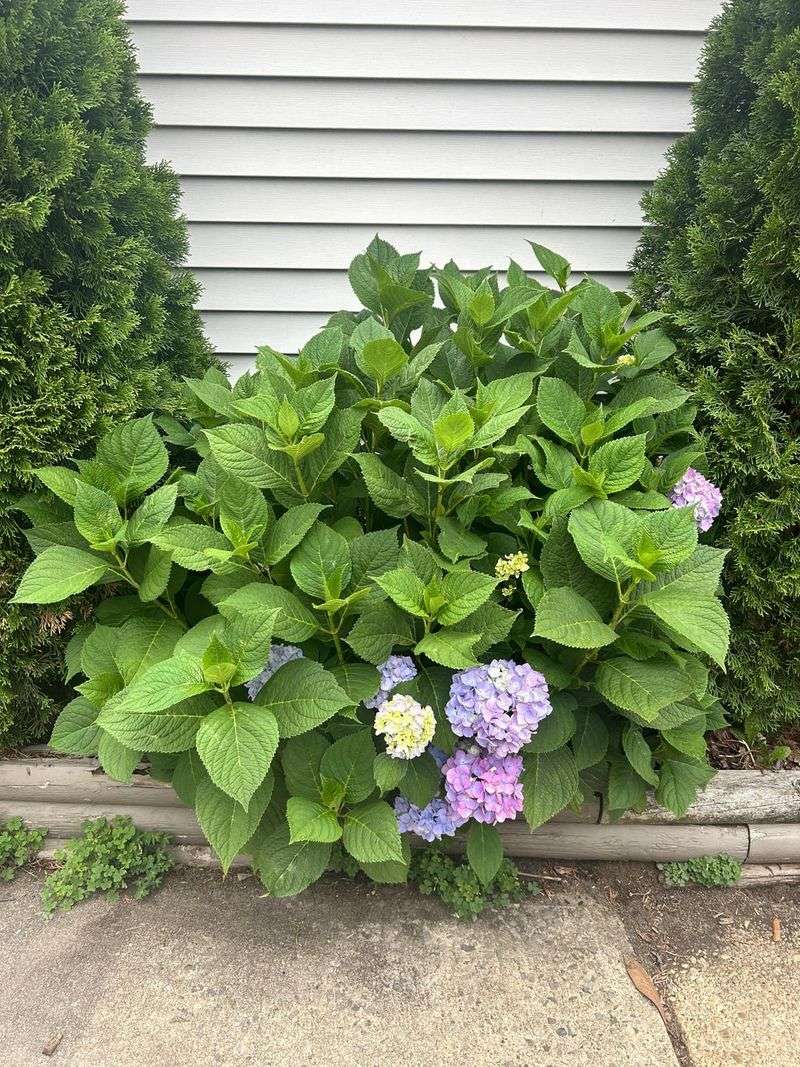There’s something magical about watching hydrangeas wake up in the spring, their tiny buds hinting at the gorgeous blooms to come.
Whether you’re a first-time grower or have been nurturing these beauties for years, a little seasonal care can go a long way. With these tips, we’ll make sure your hydrangeas not only survive but thrive—bringing bursts of color and charm to your garden.
Trust me, once you see them in full bloom, you’ll know the effort was totally worth it!
1. Prune At The Right Time
Ever found yourself wielding pruning shears like a pro? Well, the key is timing! Pruning in late winter or early spring is essential to get those hydrangeas ready for a blooming frenzy.
I once pruned too late and ended up with a few begrudging blooms. So, grab those shears, channel your inner artist, and give your hydrangeas the trim they deserve without losing too much of their charm.
It’s all about encouraging new growth while maintaining their natural structure. Don’t be shy, your hydrangeas will thank you!
2. Know Your Hydrangea Type
Understanding your hydrangea’s personality is like getting to know a new friend. Some love the sun, others crave the shade.
By knowing whether you’re dealing with a mophead, lacecap, or panicle, you can tailor their care to their specific needs. Misidentifying them might lead you to water too much or too little, or plant them in the wrong spot.
So, grab that gardening book or do a quick search to become the hydrangea whisperer you were meant to be. Your blooms will definitely reflect your newfound knowledge!
3. Remove Dead Or Weak Stems
Got some stems that look like they’ve seen better days? Snip those off! Removing the dead or weak stems helps the plant focus its energy on growing strong, healthy blooms.
Think of it as giving your hydrangeas a fresh start every spring. This simple task can make a world of difference in their overall appearance and health.
Plus, it keeps your garden looking tidy and well-maintained. So, don’t hesitate to clean up your hydrangeas and let them shine in all their glory!
4. Check For Winter Damage
Do you ever wonder how your hydrangeas fared during the chilly winter months? Take a stroll through your garden and inspect for any signs of winter damage.
Broken branches, frostbitten leaves, or any unusual spots might need your attention. Engaging in a little detective work early in the spring can protect your plants from further harm.
After all, wouldn’t you want to make sure they’re ready for their spring debut? It’s all about catching problems early and setting them on a path to blooming success!
5. Fertilize For Healthy Growth
Feeding your hydrangeas with the right nutrients is like giving them a springtime energy drink. A balanced fertilizer can work wonders, providing the essential elements needed for vibrant growth.
Avoid over-fertilizing, though! It’s not a race, and too much can lead to lush leaves but fewer flowers. Applying fertilizer in early spring ensures they have what they need to produce stunning blooms.
Balance is key here, helping your hydrangeas grow strong and healthy. This little boost sets the stage for a spectacular season of blooming!
6. Use The Right Soil pH
Who knew soil had personality? I found out the hard way when my hydrangeas refused to change color. Adjusting the soil pH to make it more acidic or alkaline can influence your hydrangeas’ color, and it’s fascinating to see them shift shades.
You can use garden lime to raise pH or sulfur to lower it, depending on whether you’re aiming for blue or pink blooms. Experiment a bit, and don’t be afraid to play with the hues.
Your hydrangeas’ color transformation might just become your favorite garden trend!
7. Water Deeply And Consistently
Keeping your hydrangeas hydrated is like offering them a refreshing drink on a hot day. Consistent and deep watering ensures their roots develop well, especially during dry spells.
Remember, it’s better to water deeply once or twice a week rather than just a sprinkle every day. This approach helps the roots grow deeper, making the plants more resilient.
So, next time you’re out in the garden, take a moment to ensure your hydrangeas are quenched and happy, ready to bloom beautifully throughout the season.
8. Mulch To Retain Moisture
Ever thought about how much moisture your soil is retaining? Adding a layer of mulch around your hydrangeas can keep the soil cool and moist, reducing the need for frequent watering.
This is especially handy during those unpredictable spring showers. Isn’t it great when nature lends a hand in your gardening duties? Plus, mulch suppresses weeds, giving your hydrangeas the space to thrive without competition.
So, grab some organic mulch, like bark or wood chips, and let your hydrangeas enjoy the benefits of this simple, yet effective, gardening trick.
9. Provide Partial Shade In Hot Climates
Too much sun can leave your hydrangeas looking a bit weary. In hotter climates, providing partial shade can make all the difference. Think of it as offering them a sunhat during the hottest part of the day.
Positioning them where they get morning sun and afternoon shade can help them thrive without getting scorched. Your hydrangeas will love the cooler environment, rewarding you with lush blooms.
So, consider their sun exposure carefully to ensure they grow happily and healthily, creating a stunning display in your garden.
10. Avoid Overwatering
Ever gone overboard with watering? I have, and my hydrangeas weren’t fans. Overwatering can lead to root rot and other issues. It’s a delicate balance; they love water but not too much of it.
Use your fingers to check soil moisture before adding more. Hydrangeas like consistency, so keep an eye out, especially in rainy spring weather.
By monitoring soil conditions, you can prevent waterlogged roots, ensuring they stay perky and full of life. With just the right amount of water, your hydrangeas will thank you with beautiful blossoms.
11. Improve Drainage If Needed
Got soggy soil? That’s not ideal for your hydrangeas! Improving drainage can save them from a soggy demise. Consider raising your garden beds or adding organic matter to lighten the soil.
This helps prevent water from pooling around the roots, which can lead to rot. Taking the time to improve drainage ensures your hydrangeas have the perfect environment to flourish.
With better drainage, they’ll be able to soak up the nutrients they need without the risk of drowning. A little effort here goes a long way!
12. Protect From Late Spring Frosts
Spring frosts can be pesky foes for your hydrangeas. Late frosts might sneak in, catching your lovely blooms off guard. A quick cover-up with a frost cloth or light sheet on cold nights can be a game-changer.
It’s like tucking them in with an extra blanket, keeping them cozy. By acting swiftly, you can prevent frost damage and keep your hydrangeas looking pristine.
Don’t let those chilly nights undo your hard work; a little protection goes a long way in ensuring they thrive through spring!
13. Deadhead Spent Blooms
Removing spent blooms might feel like a goodbye, but it’s more of a ‘see you soon!’ experience. I’ve found that by deadheading regularly, my hydrangeas keep producing new flowers throughout the season.
It’s like giving them a little nudge to keep blooming. Use sharp scissors or pruners, and snip just above a set of healthy leaves. This practice encourages more blooms and keeps the plant tidy.
Your hydrangeas will love the extra attention and repay you with a garden full of color and cheer!
14. Encourage Stronger Stems With Support
Hydrangeas can get a bit floppy, can’t they? Providing support is like giving them a gentle hug. Use bamboo stakes or garden twine to hold up heavier blooms.
This way, they can stand tall without straining their stems. It’s a small act that makes a big difference, ensuring they look their best even after a heavy rain.
Carefully tie the stems to avoid damaging them, and watch your hydrangeas flourish with a little extra help. You’ll have a garden full of proud, upright blooms that never fail to impress.
15. Monitor For Pests And Diseases
Keeping an eye out for pests and diseases is like being the guardian of your garden. Regular inspections can help you spot any unwelcome guests early. Look for signs like discolored leaves or unusual spots.
If you find any, act promptly with appropriate treatments. This vigilance ensures your hydrangeas stay healthy and vibrant, free from pesky invaders.
With just a bit of attention, you can maintain a flourishing garden full of happy plants. It’s all about staying one step ahead and keeping your hydrangeas in tip-top shape!
16. Adjust Soil For Desired Bloom Color
Fancy a color change? I’ve had fun turning my hydrangeas blue with a soil tweak. Adjusting the soil pH alters bloom color, offering a delightful garden experiment. Add aluminum sulfate for blues or garden lime for pinks.
It’s like a mini science project with instant gratification. Monitor the changes and adjust as needed for the perfect shade. This playful approach to gardening adds a splash of creativity, letting you design your garden’s color palette.
Dive into the world of color and watch your hydrangeas transform into your chosen hue!
17. Divide Overgrown Plants If Necessary
Ever felt your hydrangeas are taking over? Dividing them can rejuvenate the plant and give you more to enjoy. Don’t let them monopolize your garden space!
Cut through the root ball carefully, and replant in new locations. This process can feel daunting, but it’s worth it for the health of the plant and the beauty of your garden.
Have you ever noticed how a little division leads to a lot more opportunity? By spreading them out, your garden will burst with even more life and color!
18. Use Epsom Salt For Lush Foliage
Epsom salt isn’t just for soothing baths! It’s a secret weapon for lush foliage. Sprinkling some around your hydrangeas in spring can boost magnesium levels, enhancing the green hues.
Just a tablespoon or two per plant will do the trick. It’s like a little spa treatment for your plants, promoting healthy leaves and overall vitality.
Have you tried this simple trick before? It’s an effortless way to add a touch of luxury to their care, ensuring your hydrangeas remain stunning all season long. A little sprinkle goes a long way!
19. Avoid Excessive Pruning
Too much of a good thing can be, well, too much. Pruning should be done with care, avoiding the urge to overdo it. Excessive pruning can reduce blooms and affect plant health.
I learned this lesson after a particularly enthusiastic pruning session left my hydrangeas a bit sparse. Trim just enough to maintain shape and remove deadwood.
Patience is key; they need time to recover and grow. It’s about finding the right balance, ensuring your hydrangeas flourish without feeling the wrath of overzealous pruning shears!
20. Give Time For New Growth To Appear
Waiting for new growth is like watching a mystery unfold. I’ve always found the anticipation exciting, as signs of life slowly appear. Stop yourself from rushing in with shears too soon.
Give them the chance to show their potential. New growth indicates where to trim and shape, ensuring the plant develops beautifully.
Have a little patience, and your hydrangeas will reward you with a spectacular show of blooms. It’s a gentle reminder that good things come to those who wait, right in your garden!


